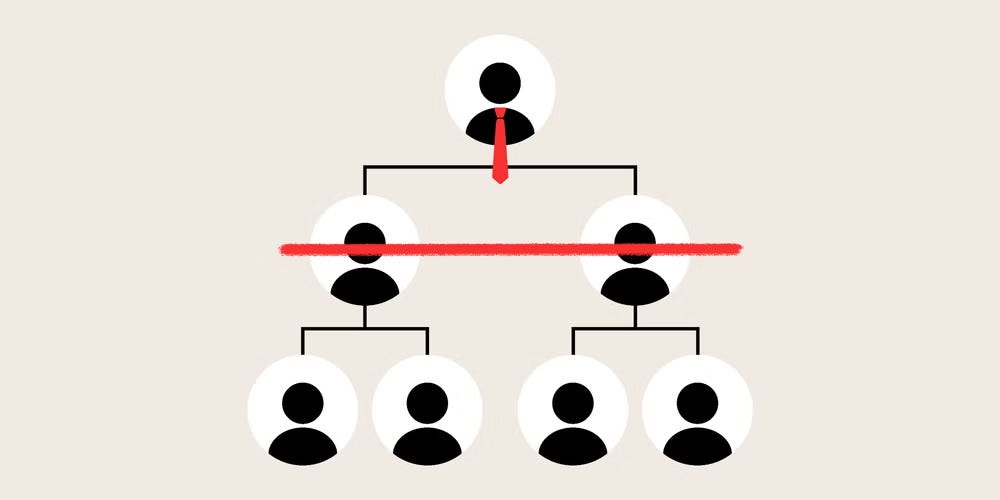The org chart — those endless boxes and arrows showing who reports to whom — may be headed for the shredder.
The rise of AI agents could strip out layers of management and change how companies are run, said Microsoft’s AI platform product lead Asha Sharma.
The corporate vice president for Microsoft’s AI platform said on an episode of “Lenny’s Podcast” published Thursday that “the whole kind of organizational construct might start to look different in a few years.”
“The org chart starts to become the work chart,” Sharma said, adding that “tasks and throughput become more important than they have been before.”
“You just don’t need as many layers,” the Microsoft exec said.
In other words, when AI agents are embedded across every workflow, companies might orchestrate tasks that automatically route to the right human-agent mix, instead of asking “who reports to whom” at the company.
“You’re not going to start to think in hierarchy and communicating upward,” Sharma said. “You’re going to start to figure out, like, kind of outward task-based type of opportunities.”
The big shift, she added, is also in the questions that companies will face: How do you automatically decide where to route a task? Who should take it on? How do you monitor whether an agent is doing it right — and fine-tune it if it’s not?
Sharma also said that workers could one day bring a personal “agent stack” to the office, much like how employees bring their own devices.
“You can start to have access to a set of skills that you never had before,” she said.
That could change how meetings might be run. “They’ll be weird, but I think they will be a bit better,” she added.
Sharma and Microsoft did not respond to a request for comment from Business Insider.
The great flattening
Big Tech has been shedding layers of management in an attempt to reduce bureaucracy.
Microsoft slashed about 6,000 employees in May, and executives told Business Insider one motivation behind the cuts was to increase managers’ “span of control,” or the number of reports per manager.
Other tech giants like Intel, Amazon, and Google have made similar moves. Google CEO Sundar Pichai told staff late last year that the company cut vice president and manager roles by 10% as part of an efficiency push. And Amazon CEO Andy Jass, who said he wants the company to run like the “world’s largest startup,” has suggested that removing management layers can cut bureaucracy.
Now, with AI agents in the mix, middle managers face an even bigger threat.
Retool CEO David Hsu told Business Insider in May that his clients — which include Boston Consulting Group, Amazon Web Services, and Databricks — are asking bluntly: “How do we get LLMs to actually replace labor?”
Some companies are already experimenting with agents as stand-ins for middle management. Clients use them to analyze meetings and deliver performance notes back to employees, Hsu said.
He added that one company is even considering eliminating sales managers because the “agent manager” provides more objective feedback.
Read the full article here
















